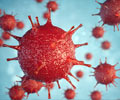Is there a new viral outbreak in China? nearly three dozen people in China have been infected by the Langya virus, likely to have jumped into humans from shrews.

‘The virus also known as the Langya henipavirus or LayV belongs to the same family as the deadly Nipah and Hendra viruses, and adds to a concerning list of zoonotic viruses that have been popping up this year.’





Others have also shown signs of blood-cell abnormalities and signs of liver and kidney damage. There have been no deaths from the new virus.What is Langya Virus?
The virus is suspected to have jumped from animals to humans in a process called zoonosis and scientists found the LayV viral RNA in over 200 shrews they tested hinting that they could be the natural reservoir of the virus. The virus was also detected in 2 percent of domestic goats and 5 percent of dogs.Scientists last week identified a new henipavirus associated with a febrile human illness. This virus was also found in shrews. The paper has been published in the New England Journal of Medicine. The virus is suspected to have jumped from animals to humans.
Langya is part of the genus Henipavirus, which has a single-stranded RNA genome with a negative orientation. Unique features of henipaviruses Paramyxovirinae are their larger genomes, longer untranslated regions that are over 100 amino acids longer than any other known phosphoprotein in the family. It is an emerging cause of zoonosis in the Asia-Pacific region.
Researchers have said that the virus can cause severe disease in animals and humans and holds a biosafety Level 4 virus classification with a 40 to 75 percent fatality rate. So far there is no vaccine for the novel virus.
Advertisement








